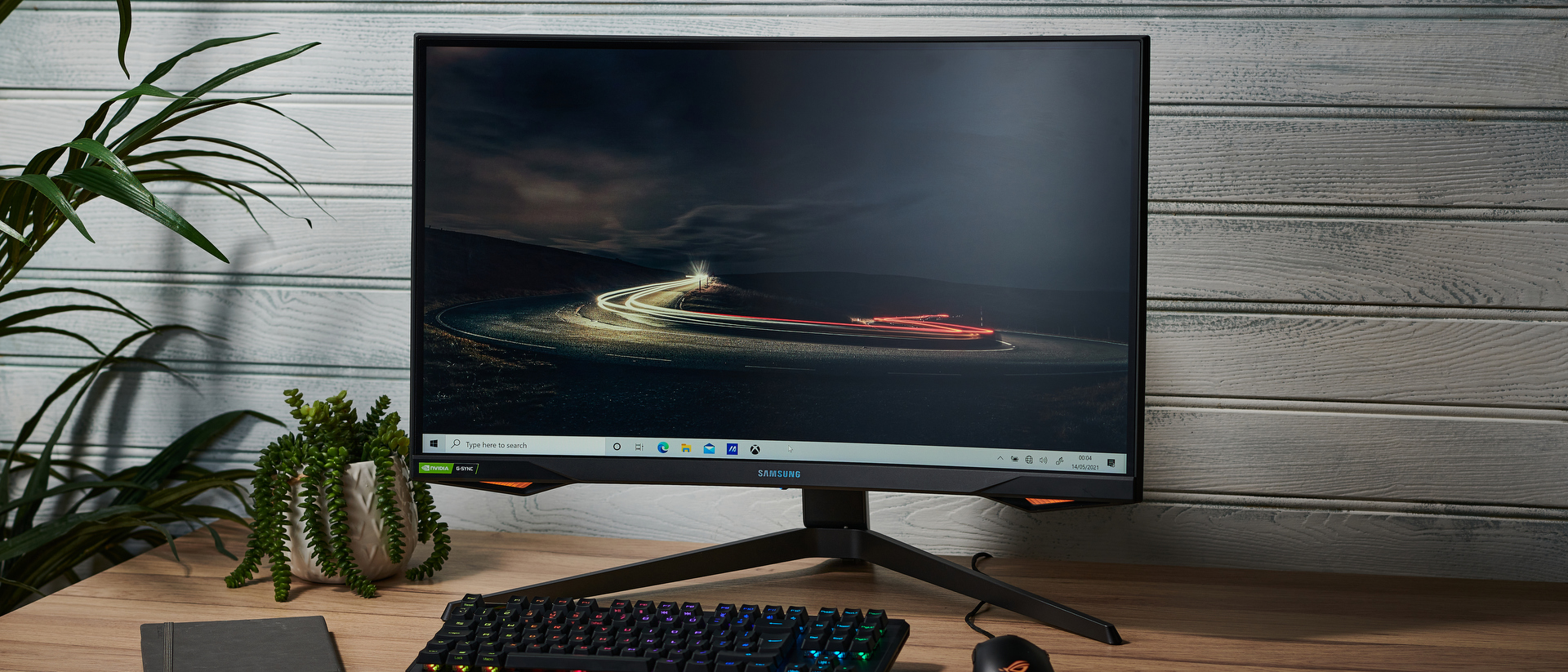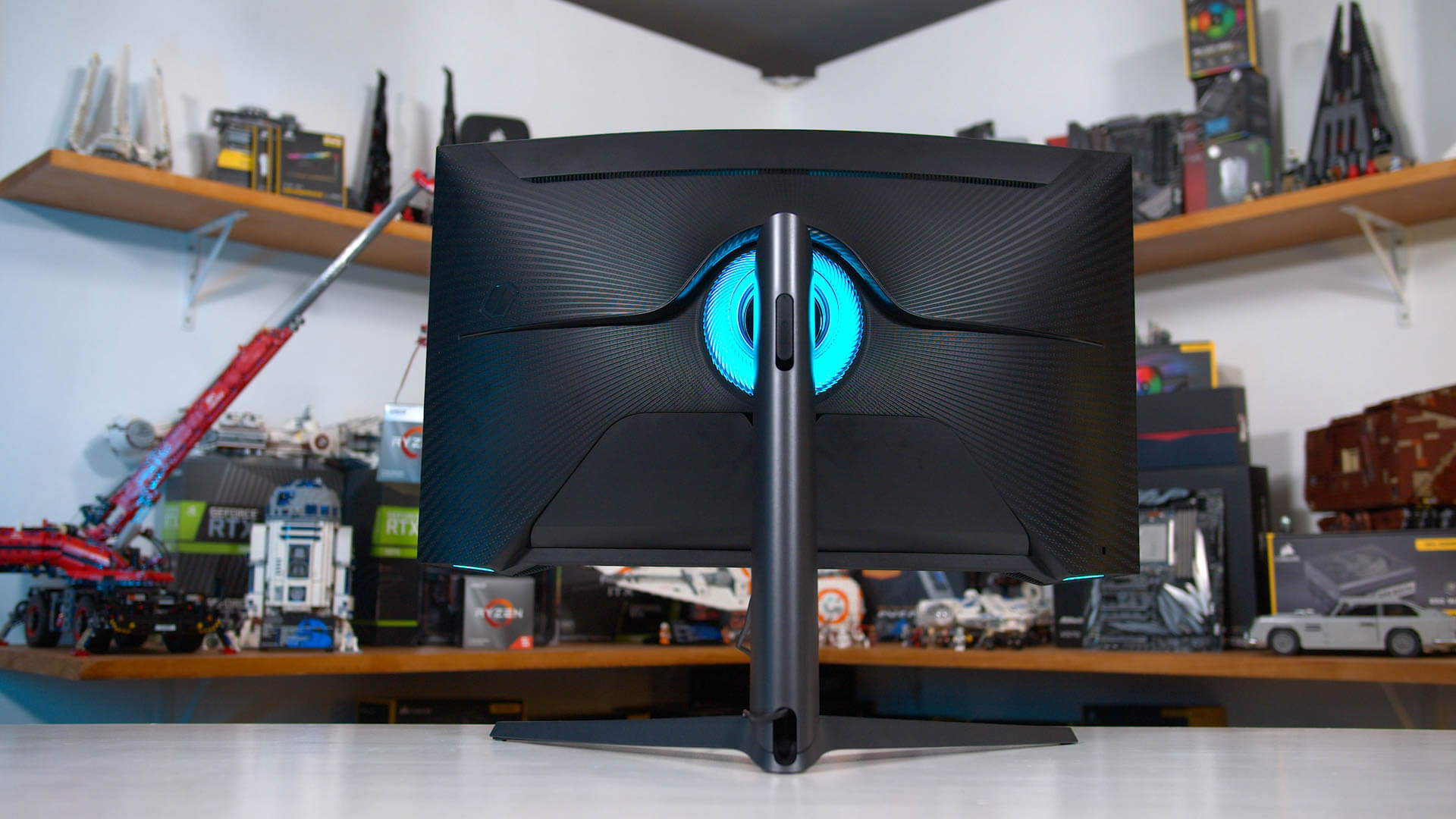

We found these quite intuitive, though quite firm and not the easiest to press – our preference goes to a more traditional joystick design for OSD control. The OSD (On Screen Display) is controlled by directional buttons beneath the central region of the bottom bezel. The key feature at the front is the screen itself, which has a light to very light matte anti-glare finish and relatively steep (1000R) curve – both explored deeper into the review. There is quite a bit of wobble to the screen when repositioning it or using the OSD controls at the bottom, for example. The monitor and stand when considered separately still have a fairly robust feel, but the screen isn’t held in place on the stand very firmly. The stand neck is a reasonably solid-feeling plastic – we tend to prefer the look and feel of coated metal for such stand elements. The ‘penguin foot’ stand base is metal-weighted with a matte plastic coating, providing decent weightiness to things but without the same ‘premium feel’ as a coated metal stand. Including both components, the bezels are~9mm (0.35 inches).
#Odyssey g7 review plus
The top and side bezels use a slimmer dual-stage design, with thin panel border flush with the rest of the screen plus slim hard plastic outer part. The total thickness of the bottom bezel is ~36mm (1.42 inches), including the ‘cheeks’. They aren’t angled appropriately or bright enough to create a pool of light on the desk. They’re inset in such a way that they’re either not visible or only partially visible from a normal viewing position in front of the monitor, but more visible from beneath or when viewing the screen further back. And RGB LED lighting elements at the bottom, which form part of the ‘Infinity Core Lighting’ feature which can be customised or disabled in the OSD (On Screen Display). There are two ‘cheeks’, one at each side of the bottom bezel, with a darker matte plastic section. From the front, dark matte plastic is used extensively for the neck, stand base and bottom bezel.

The monitor offers some of the distinctive styling elements the company’s Odyssey offerings are known for. Some of the key ‘talking points’ for this monitor have been highlighted in blue below, for your reading convenience. A 1ms grey to grey response time is specified, but as usual you shouldn’t pay too much attention to specified response times. A 165Hz refresh rate and 3840 x 2160 resolution is supported, alongside 10-bit colour. The monitor is based on a 31.5” CSOT VA (Vertical Alignment) panel with 1000R (relatively steep) curve.
#Odyssey g7 review movie
We put this very interesting model through its paces in our usual suite of ‘real world’ tests, spanning usage on the desktop, movie watching and of course gaming.
#Odyssey g7 review series
To broaden the appeal to console gamers, HDMI 2.1 is also included for ‘4K’ UHD and VRR support for compatible consoles such as the PS5 and Xbox Series X. With its curved ~32” ‘4K’ UHD screen, 165Hz refresh rate and Mini LED backlight solution that’s exactly what the Samsung Odyssey Neo G7 (S32BG75) aims to deliver. Some seek an immersive gaming experience under both SDR (Standard Dynamic Range) and HDR (High Dynamic Range).


 0 kommentar(er)
0 kommentar(er)
